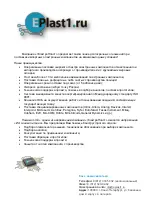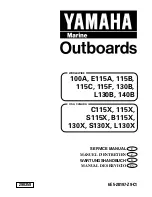
www.ti.com
ADC Evaluation
5
ADC Evaluation
This section describes how to set up a typical ADC evaluation system that is similar to what TI uses to
perform testing for data-sheet generation. Consequently, the information in this section is generic in nature
and is applicable to all high-speed, high-resolution ADC evaluations. This section covers signal tone
analysis, which yields ADC data sheet figures of merit such as signal-to-noise ratio (SNR) and spurious
free dynamic range (SFDR).
5.1
Hardware Selection
To reveal the true performance of the ADC under evaluation, great care should be taken in selecting both
the ADC signal source and ADC clocking source.
5.1.1
Analog Input Signal Generator
When choosing the quality of the ADC analog input source, consider both the harmonic distortion
performance of the signal generator and the noise performance of the source.
In many cases, the harmonic distortion performance of the signal generator is inferior to that of the ADC,
and additional filtering is needed if users expect to reproduce the ADC SFDR numbers found in the data
sheet. Users can easily evaluate the harmonic distortion of the signal generator by connecting it directly to
a spectrum analyzer, measuring the power of the output signal, and comparing that to the power of the
integer multiples of the output signal frequency. If the harmonic distortion is worse than the ADC under
evaluation, the ADC digitizes the performance of the signal generator and the true SFDR of the ADC is
masked. To alleviate this, it is recommended that users provide additional LC filtering after the
signal-generator output.
Another important metric when deciding on a signal generator is its noise performance. As with the
distortion performance, if the noise performance is worse than that of the ADC under evaluation, the ADC
digitizes the performance of the source. Noise can be broken into two components, broadband noise and
close-in phase noise. Broadband noise can be improved by adding an LC filter to improve distortion
performance; however, the close-in phase noise typically cannot be improved by additional filtering.
Therefore, when selecting an analog signal source, it is important to review the manufacturer's phase
noise plots and take care to choose a signal generator with the best phase-noise performance.
5.1.2
Clock Signal Generator
Equally important in the high-performance ADC evaluation setup is the selection of the clocking source.
Most modern ADCs, the ADS62PXX included, accept either a sinusoidal or a square-wave clock input.
The key metric in selecting a clocking source is selecting a source with the lowest jitter. This becomes
increasingly important as the ADC input frequency (f
in
) increases, because the ADC SNR evaluation
setups can become jitter-limited (t
j
) as shown by the following equation.
SNR (dBc) = 20 log [2
p
× f
in
× t
j
(rms)]
In theory, a square-wave source with femtosecond jitter would be ideal for an ADC evaluation setup.
However, in practical terms, most commercially available square-wave generators offer jitter measured in
picoseconds, which is too great for high-resolution ADC evaluation setups. Therefore, most evaluation
setups rely on the ADC internal clock buffer to convert a sinusoidal input signal into a ultra-low-jitter
square wave. When selecting a sinusoidal clocking source, it has been shown that phase noise has a
direct impact on jitter performance. Consequently, great scrutiny should be applied to the phase-noise
performance of the clocking signal generator. TI has found that high-Q monolithic crystal filters can
improve the phase noise of the signal generator, and these filters become essential elements of the
evaluation setup when high ADC input frequencies are being evaluated.
23
SLAU237B – May 2008 – Revised July 2010
ADS62PXXEVM
Copyright © 2008–2010, Texas Instruments Incorporated





































